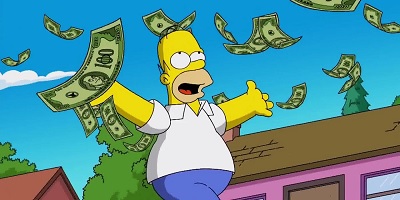I’m here to ruin some long running narratives. I apologize in advance.
Money is not scarce. It never has been and it never will be. More importantly, scarcity of money is not a strength.¹ It is a weakness. Sound weird? Yeah, I bet. Let me explain.
Back in college I was kind of obsessed with commodities and commodity money. I’d been reading a lot of Austrian econ and all that stuff. But then I came across the endogenous money theories and I learned over time that money is not a physical thing or a rock in the ground or anything “natural” at all. Money is actually a very unnatural thing. We’re the only species that uses it because it is pretty much something we conjure up in our minds. More specifically, “money” is really just a bunch of contractual agreements. It’s “I’ll give you 25 apples at this time next year and this monetary note will settle that debt”. Loans create deposits. Deposits are money. Anyone who’s read this website for 10 minutes probably knows that. But all those loans, all that money, is just an agreement between two parties. It’s just a contractual agreement created from thin air. The government didn’t need to be involved (though that could certainly help in lots of ways). We didn’t need gold bars or physical coins or anything “natural” here. We just needed two people to make an agreement denominated in some specific terms. In its simplest sense, that’s really all money is – an agreement between two people that other people ultimately exchange in the meantime for all sorts of other stuff of relative value.
The key point here is that that money has value because someone has strong demand for it, presumably because there’s the promise of valuable goods and services attached to it. I want those 25 apples in the future and so do lots of other people so the demand for that money is strong because it’s a claim on real resources (assuming of course the 25 apples actually come into existence). And this is basically all the modern economy is. It’s a bunch of people making promises to make things (mostly homes, to be honest) in exchange for some amount of deposits that they conjured up from nothing in the form of a contract.
The more important key point is that money is elastic. This means that we can create more of these agreements as needed to meet the demands of the economy. A lot of us have been trained to believe that more money is necessarily bad/inflationary. But this need not be true so long as we produce the corresponding real resources to support the demand for that money. In fact, this is a good thing because it provides us with a monetary system that can flexibly react to the needs of its users. And this is what all credit based monetary systems are – flexible systems that can expand and contract financial assets as needed. Within the piping of the existing system banks are the primary issuers of the loans that supply that needed liquidity.
The alternative is some sort of fixed money supply that relies on relative price changes and the kindness of rich people to lend some of that money. While this could work in theory, it doesn’t work in reality because the system just isn’t dynamic enough. And this is the primary reason why we end up with what people refer to as “fractional reserve” style systems. In other words, someone (or something) tries to fix the money supply using gold or reserves or some other fixed supply asset. And credit markets naturally build off of these systems because the fixed supply system isn’t elastic enough. This is good as it allows us to grow more apples and build more houses on demand, as needed to meet our needs.
That’s it. Short and sweet. If you have questions shoot me an email. I’d love to help if I can.
¹ – A lot of hard money types argue that scarcity of money is a good thing. And they’re not necessarily wrong. We don’t want so much credit in the system that it causes booms and busts or high inflation. But we also don’t want money to be so scarce that it can’t respond to the needs of the economy’s users. This is important in the context of debates around things like Bitcoin or endogenous money because the expansion of credit within these systems is essential to its health. In fact, one could argue that Bitcoin’s biggest weakness as a monetary unit is its scarcity. But credit based systems will continue to grow off the Bitcoin ecosystem and this will improve its utility as synthetic forms of Bitcoin and cryptocurrencies make it a more functional and useful form of money. But as with so much in life, the key is finding some balance. Scarcity is bad. So is abundance.
NB – Scarcity specifically refers to the supply of the item being used as money. For example, gold has a certain fixed quantity at any given time since it can only be mined slowly. The same fact is true for Bitcoin. In fact, in the long-run Bitcoin has a specifically fixed supply. Despite this, the value of Bitcoin can change. This does not change anything discussed above and in fact is likely to exacerbate the degree to which it causes inequality because its inherent scarcity will drive hoarding (or, hodling, if you will) which will exacerbate the issues that have always caused fixed supply systems to be inefficient in the long-run.
Mr. Roche is the Founder and Chief Investment Officer of Discipline Funds.Discipline Funds is a low fee financial advisory firm with a focus on helping people be more disciplined with their finances.
He is also the author of Pragmatic Capitalism: What Every Investor Needs to Understand About Money and Finance, Understanding the Modern Monetary System and Understanding Modern Portfolio Construction.


